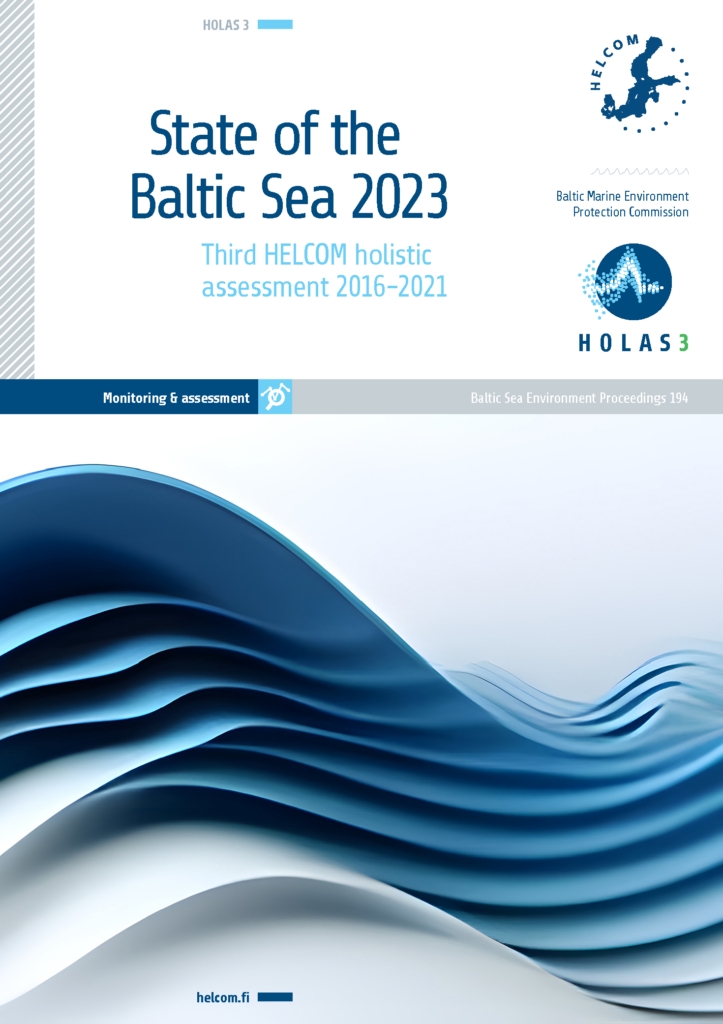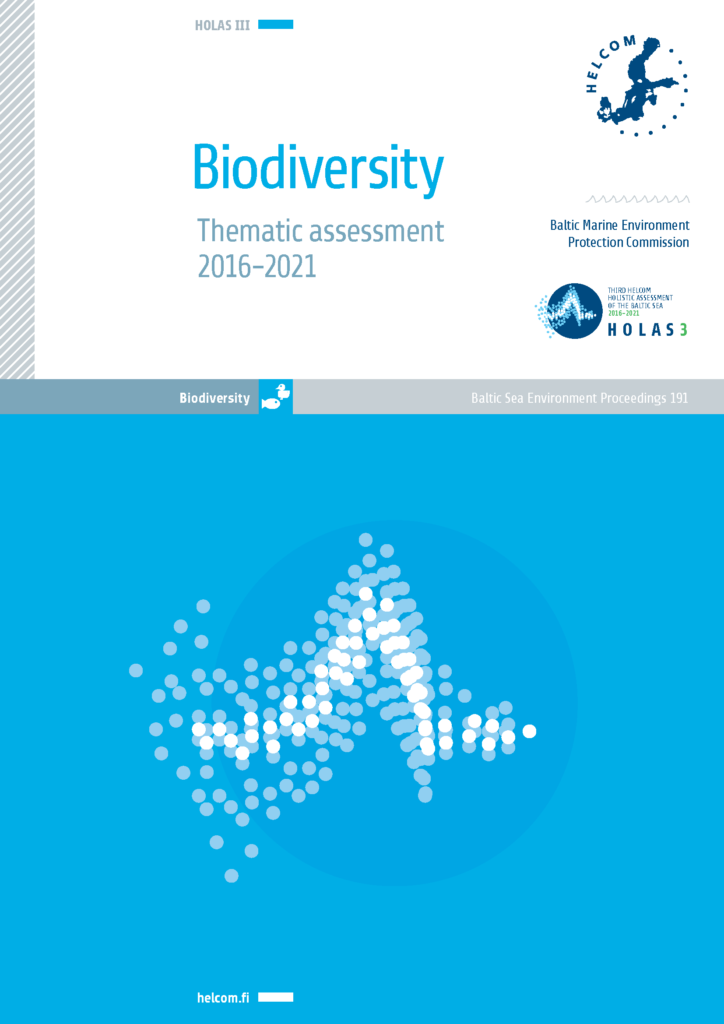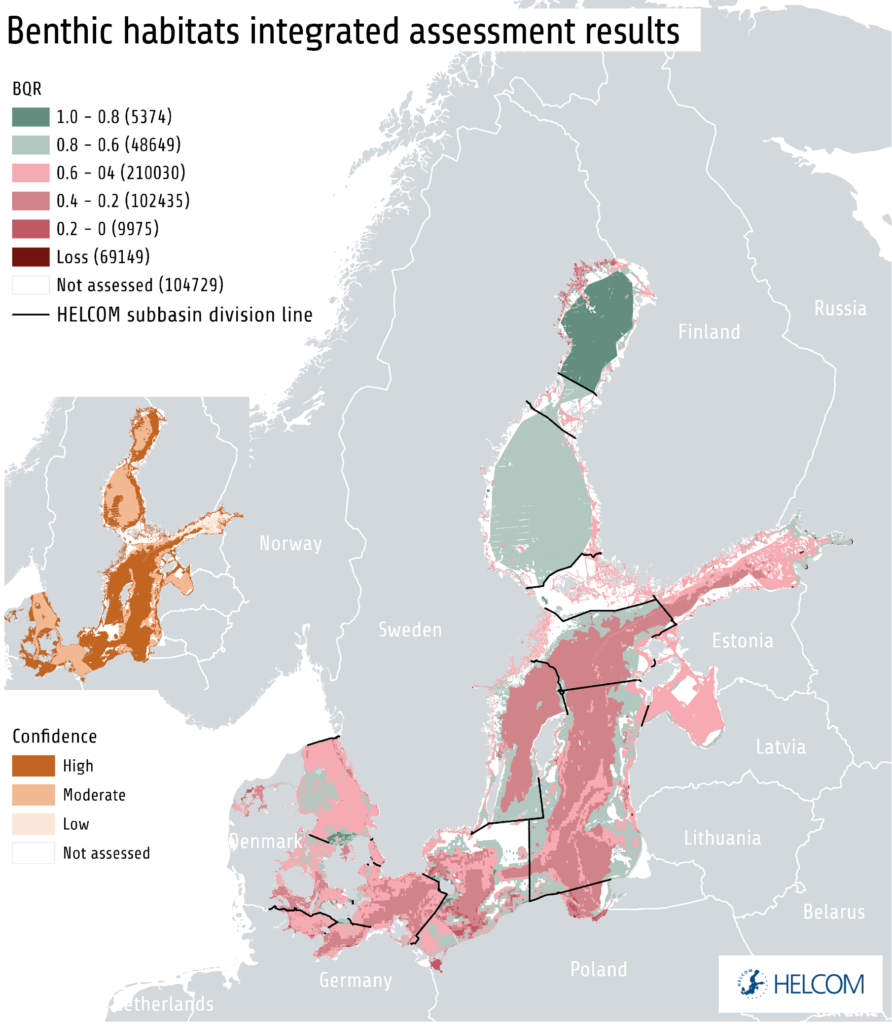BENTHIC HABITATS
The status of benthic habitats
The status of benthic habitats (Figure 3.5) is assessed based on the status of soft-bottom macrofauna, shallow-water oxygen conditions, oxygen debt and the cumulative impact of physical pressures. Large parts of the benthic habitats in the southern Baltic Sea do not have a good integrated status, while the status is good in most of the open sea areas in the northern parts of the region (Figure 3.6). The vast majority of the coastal area, irrespective of its location, exhibits not good status (HELCOM 2023a).
Of particular concern is the increasing extant of areas with poor or low oxygen in deep waters of the central Baltic Sea, which limits the populations of benthic fauna and impacts on overall ecosystem processes. The oxygen debt below the halocline has increased in all sub-basins since the early 1900s, especially in the Baltic Proper. The increase has been very steep between the previous and current assessment periods.
Why is this important?
Benthic habitats are widely distributed and contribute to various ecosystem services, including the assimilation, storage and sequestration of carbon and nutrients.
Many benthic animals have important regulatory roles by decomposing organic matter that sinks to the seabed or as grazers in shallow areas.
Benthic species are a fundamental food source for fish and birds and are therefore an important link between food web processes in benthic and pelagic habitats.
Seaweeds and plants in shallow areas are an important environment for many fish species.

State of the Baltic Sea 2023 — The third HELCOM holistic assessment (HOLAS 3)
State of the Baltic Sea 2023 is a synthesis report that builds on, and integrates, results from a wide range of assessment products produced within the third HELCOM holistic assessment. Its role is to link information from the underpinning assessment products together, thus highlighting the holistic aspects. With this in mind, the summary report focuses on presenting the results and on an in-depth look at why we are seeing these results, providing over-arching context and analysis. The report helps develop a clearer picture of where we are and how things are connected, supporting coordinated and effective measures to strengthen the Baltic Sea environment.

Thematic assessment
Biodiversity
The thematic assessment report on the biodiversity status of the Baltic Sea (HELCOM 2023a) presents results from status assessments relating to biodiversity, based on HELCOM indicators, integrated assessments and regionally agreed data for the years 2016-2021. The assessment reveals improvements in spatial coverage compared to HOLAS II (2011-2016), incorporates new indicators and introduces novel topics. For the first time, trends for indicators and assessment results are compared across assessment periods.
However, further work remains to fill gaps in spatial coverage, improve precision of HELCOM indicators and to strengthen relevance to ecosystem-based management.


